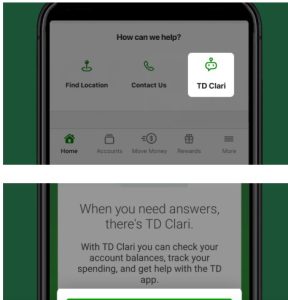Reading: Customer Relationship Management Systems
Marketing Information and Customer Relationship Management (CRM)
 Earlier in this course, we cited the American Marketing Association’s definition of customer relationship management: “a discipline in marketing combining database and computer technology with customer service and marketing communications.” The AMA’s definition goes on to describe the ultimate goal of customer relationship management as the ability to provide “meaningful one-on-one communications with the customer by applying customer data (demographic, industry, buying history, etc.) to every communications vehicle.” [1]
Earlier in this course, we cited the American Marketing Association’s definition of customer relationship management: “a discipline in marketing combining database and computer technology with customer service and marketing communications.” The AMA’s definition goes on to describe the ultimate goal of customer relationship management as the ability to provide “meaningful one-on-one communications with the customer by applying customer data (demographic, industry, buying history, etc.) to every communications vehicle.” [1]
Because CRM relies on customer data—and specifically the effective use of internal data—it is essential to discuss CRM systems in the context of marketing information and research.
CRM systems are powerful platforms that serve several critical functions for marketing, sales, and customer experience. Organizations use them to:
-
Capture and centralize internal data about customers and interactions across channels.
-
Provide employees with access to customer data to inform a wide variety of touchpoints, from sales calls to customer support.
-
Conduct data analysis and generate insights about how to better meet the needs of target segments and individual customers.
-
Deliver a marketing mix tailored to the needs and interests of these target segments and customers in real time.
Leading providers of CRM systems today include Salesforce, Microsoft Dynamics 365, Oracle, and HubSpot, among others. These platforms combine multiple components:
-
Databases and Data Warehouses: Provide the infrastructure for storing and retrieving customer data at scale.
-
Contact and Interaction Management: Track and integrate customer communications across email, phone, social media, and web.
-
Analytics and AI: Use predictive modeling and machine learning to identify customer patterns, anticipate needs, and personalize offers.[2]
TD Bank and Salesforce
TD Bank Group, has invested heavily in CRM systems and artificial intelligence to personalize customer experi

Screencapture of TD Clari from https://www.td.com/ca/en/personal-banking/how-to/td-app/clari 19/08/2025. ences. TD leverages Salesforce and its own internal data platforms to integrate financial histories, digital interactions, and customer service records. This enables TD to provide personalized financial advice, anticipate customer needs, and recommend products such as credit cards, mortgages, or investment services at the right moment. The bank has also introduced TD Clari, an AI-powered assistant within its mobile app, which uses CRM data to help customers track spending, manage budgets, and receive tailored financial insights. This approach demonstrates how CRM systems support not only internal efficiencies but also build trust and long-term relationships with Canadian consumers.
Read some of the Salesforce.com customer success stories.
Creation note: This content was updated with the assistance of ChatGPT, a language model developed by OpenAI, and was subsequently reviewed and edited by the author for clarity and accuracy.
- https://www.ama.org/resources/Pages/Dictionary.aspx?dLetter=C ↵
- Deloitte. (2023). The future of CRM: Driving business growth with customer insights. https://www2.deloitte.com/us/en/insights/industry/technology/future-of-crm.html[/footnote]
-
Automation Tools: Streamline campaigns, lead nurturing, and customer support workflows.
This analytical process mirrors the marketing research steps discussed earlier: identifying a problem, planning for data collection, analyzing results, and taking action. The difference is that CRM systems provide ongoing, real-time insights embedded directly into business operations, rather than being one-off projects.
CRM platforms are also designed to capture customer data across the entire life cycle: initial contact, consideration, purchase, post-purchase support, and even advocacy. Many systems now integrate customer satisfaction metrics, Net Promoter Score (NPS), and social listening data, allowing businesses to see what drives customer loyalty and how best to retain high-value accounts.
Canadian CRM Adoption
In Canada, CRM adoption continues to rise, particularly among small- and medium-sized businesses (SMEs). A 2023 study by IDC Canada found that over 65% of Canadian organizations are actively investing in CRM and customer experience technologies, with cloud-based solutions like Salesforce and HubSpot leading adoption due to scalability and integration with e-commerce platforms such as Shopify.[footnote]IDC Canada. (2023). Canadian Customer Experience (CX) and CRM Trends. https://www.idc.com/ca ↵

